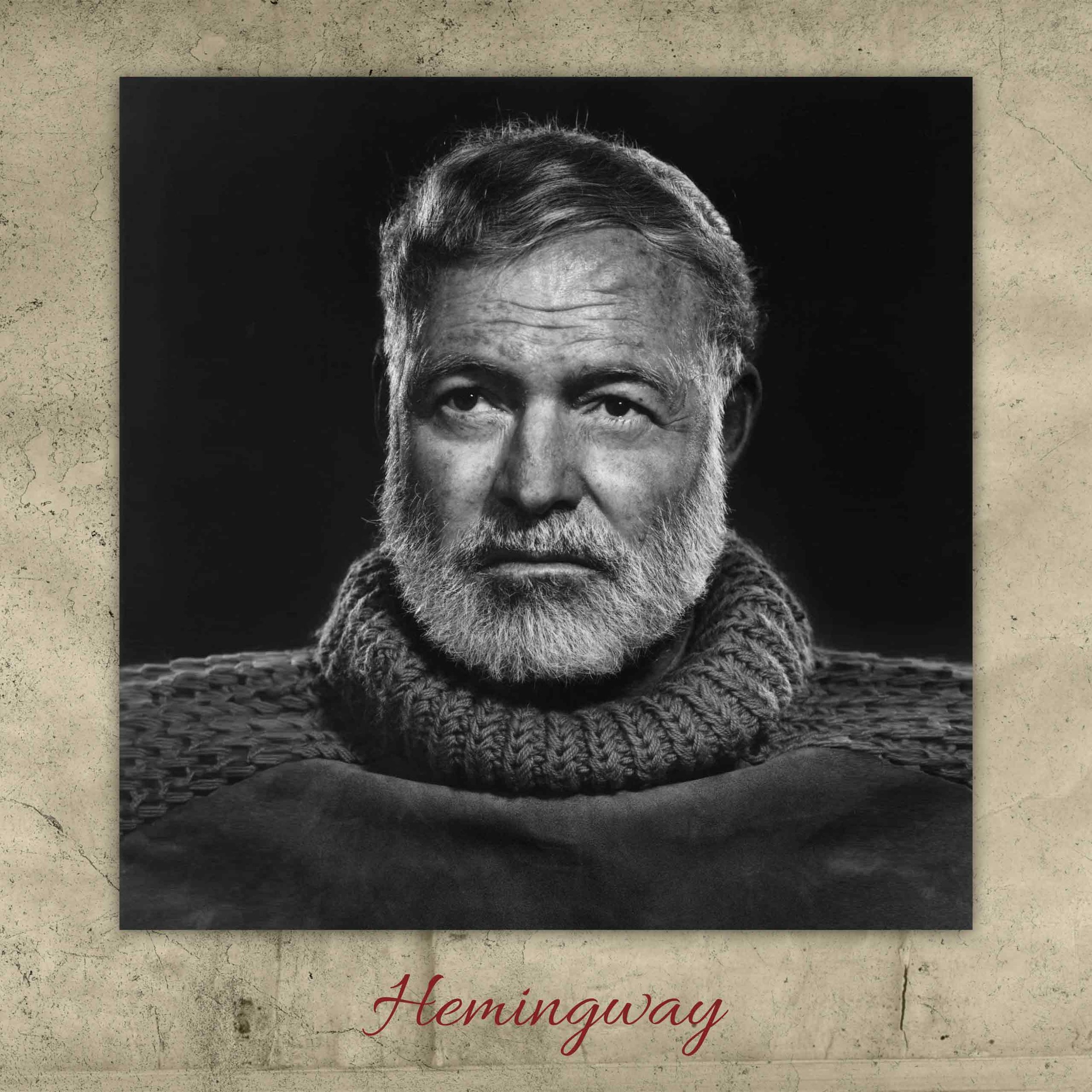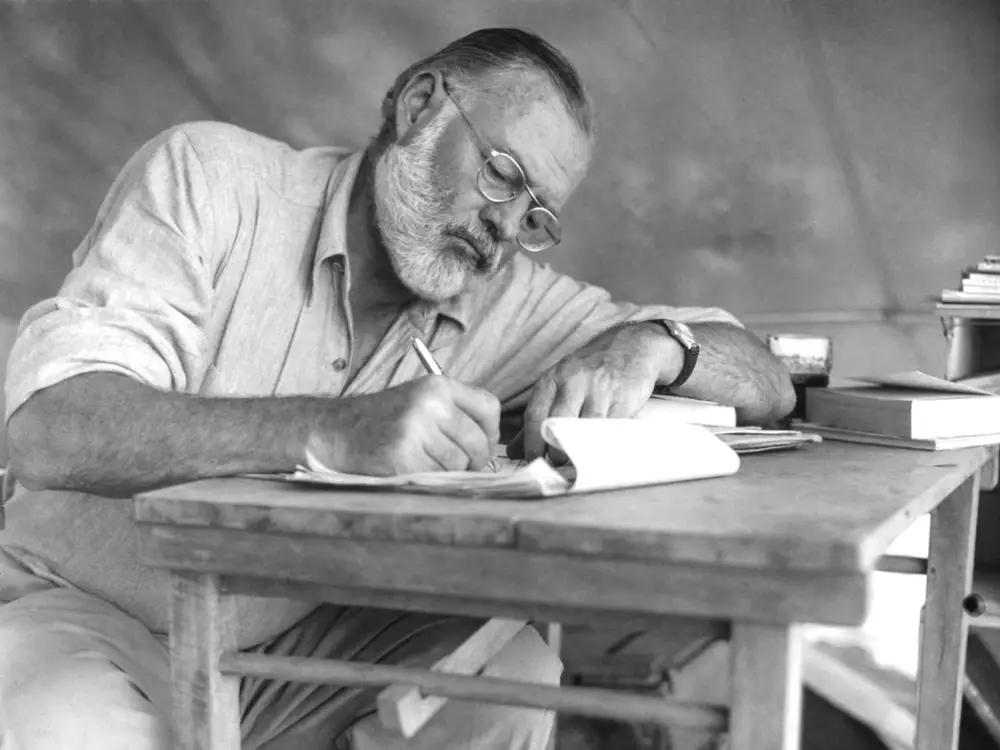Hemingway
Considered to be among the greatest writers of all time, Hemingway is a household name for many. But writing was only part of the wild and adventurous life he led. From world wars to revolutions, big game hunting to deep sea fishing, excitement and danger were as essential as oxygen for Hemingway. For those unfamiliar with his story, let's turn back the pages and peer into the extraordinary life of legendary writer Ernest Hemingway.
Ernest Miller Hemingway was born in Oak Park, Illinois, on July 21, 1899. Ernest discovered his love of writing in high school, and after graduation, instead of attending university, he decided to move to Kansas City and work as a reporter for the Star newspaper. Like many other young men of the time, Hemingway felt an intense desire to serve in the Great War. Despite many failed attempts to join the military, due to his vision, Ernest finally managed to get into the action as an ambulance driver for the Red Cross. Hemingway was sent to the Austro-Italian front at Fossalta di Piave, and on July 8, 1918, just 13 days before his 19th birthday, he was injured in a mortar attack. In a letter home, he vividly described the attack, "Then there was a flash, as when a blast-furnace door is swung open, and the roar that started white and went red." Although injured in the blast, young Ernest managed to carry away a wounded Italian soldier and was injured again, this time by machine gun fire. This act of bravery resulted in the young author being one of the first Americans to receive the Italian Silver Medal of Valor. He spent 6 months recovering from his injuries in a Milan hospital, where he fell in love with one of his nurses, Agnes von Kurowsky. After a brief romance, Ernest asked Agnes to marry him, but she declined. These experiences in Italy were instrumental in his development and became the inspiration for a future novel.
Hemingway 1918
Once home, Hemingway continued his writing and went to France as a correspondent for the Toronto Star. Ernest fell in love with Paris, where he met other American authors like Gertrude Stein and Scott Fitzgerald, who encouraged him to continue his non-journalistic writing. And in 1924, his book In Our Time was released in Paris before being published in New York in 1925. Hemingway began receiving notoriety after he published his next book, The Sun Also Rises, in 1926. Loving the excitement of the city, he remained based out of Paris for the next few years as he traveled around hunting, fishing, and writing. During these travels, he also developed a keen interest in bullfighting. After many adventures, Ernest released a new novel in 1929 entitled, A Farewell to Arms. Without spoiling it for those who haven't read it, this novel follows an American soldier serving with the Italian ambulance service who falls in love with the nurse who cares for him as he recovers from injuries sustained in the war. Drawing inspiration from his time spent in Italy during the war, this book became one of his best-selling and most popular novels.
Hemingway with Agnes von Kurowsky 1918
Riding on a wave of success and fame, Hemingway continued his adventuring with pen in hand. The more time he spent in Spain, the more deeply he fell in love with the country and culture. Bullfighting was a particular area of fascination for him and inspired his book, Death in the Afternoon, published in 1932. In 1933 and 34, Ernest spent much of his time in Africa hunting big game, which birthed another book, The Green Hills of Africa, in 1935. By this point in his life, due largely to his love of deep-sea fishing, Hemingway was spending much of his time in Key West, where he had purchased a home and fishing boat in 1931. He lived in this home with his second wife, Pauline, and their two sons, Patrick and Gregory, until he and Pauline divorced in 1940.
Hemingway Fishing
In December of 1936, at a little bar called Sloppy Joe's in Key West, Ernest met Martha Gellhorn. Martha, 28 at the time, was also a writer and had greatly admired Ernest, who was now 39, since she was in college. The following year Hemingway and Gellhorn traveled to Spain together to cover the Spanish Civil War. This marked the beginning of a passionate affair between the two writers, which resulted in their marriage in 1940, just 7 days after his divorce from his second wife, Pauline. Hemingway took 4 trips to Spain during the war, and his experiences there became the basis for arguably his best novel, For Whom the Bell Tolls.
Following their marriage in 1940, Ernest and Martha purchased an estate just outside of Havana, Cuba, and set out to cover another war. This time it was the Japanese invasion of China. During the Second World War, Hemingway spent much of his time in London as a journalist. He participated in many missions with the Royal Air Force and hitched a ride with the American troops for their invasion of Normandy on D-Day. Ernest also covered the Battle of the Bulge and the liberation of his beloved Paris. The courageous author and war hero was recruited by the US Embassy in Havana and subsequently formed his own small intel-gathering network in Cuba, where he spied for the United States. However, the war proved too much for his marriage, and during their time in London, Martha and Ernest all but cut ties. As World War 2 drew to a close in 1945, so to did the marriage of Hemingway and Gellhorn.
Hemingway and Gellhorn in China 1941
During his separation from Martha in 1944, Hemingway met another female correspondent named Mary Welsh. He quickly became infatuated with her, and on only their third meeting, he asked her to marry him despite both of them still being married to other people. In 1946 Mary divorced her husband and became the fourth and final Mrs. Hemingway. The two traveled extensively, spending as much time as they could hunting and fishing, and in 1953, on an expedition in Africa, they survived 2 separate plane crashes within 2 days of each other. A few months after these accidents, Hemingway was awarded the Pulitzer Prize in fiction for his short shorty, The Old Man and the Sea. The following year in October of 1954, he was again honored with another award when he received the Nobel Prize for literature.
Hemingway Hunting
No stranger to conflict, Hemingway continued living in Cuba during the Cuban Revolution, remaining there for a year after Fidel Castro took power in 1959. In 1960 Ernest and Mary moved to Ketchum, Idaho. Perhaps from the emotional trauma of seeing so much war and destruction, or perhaps due to head trauma sustained over decades of combat and multiple plane crashes, the beloved author was plagued with crippling anxiety and depression. He was hospitalized twice at the Mayo Clinic, where he underwent electroshock treatments. And 2 days after returning home from his last admission Ernest Hemingway, now 61 years old, took his life.
Few people have lived lives filled with as much adventure and intrigue as Ernest Hemingway. He was married 4 times and had 3 sons. His first wife was Hadley Richardson; they were married 6 years from 1921-1927, and had a son named John. His second with Pauline Pfeiffer gave him two more sons, Patrick and Gregory. Ernest and Pauline were married for 13 years, from 1927-1940, when he married Marth Gellhorn. Hemingway and Gellhorn had no children and were married for 5 years, 1940-1945. Ernest was survived by his fourth wife, Mary Hemingway, who he married 15 years before his death. His love of people and cultures led him all over the world in search of new experiences and showed him the beauty of humanity. Following his passion for hunting and fishing, he was able to experience the many adventures the natural world has to offer. Through war, he had a front-row seat to the evil and depravity of man. These experiences are responsible for inspiring the incredible writing of the sensational man, Ernest Hemingway.
Hemingway Writing







